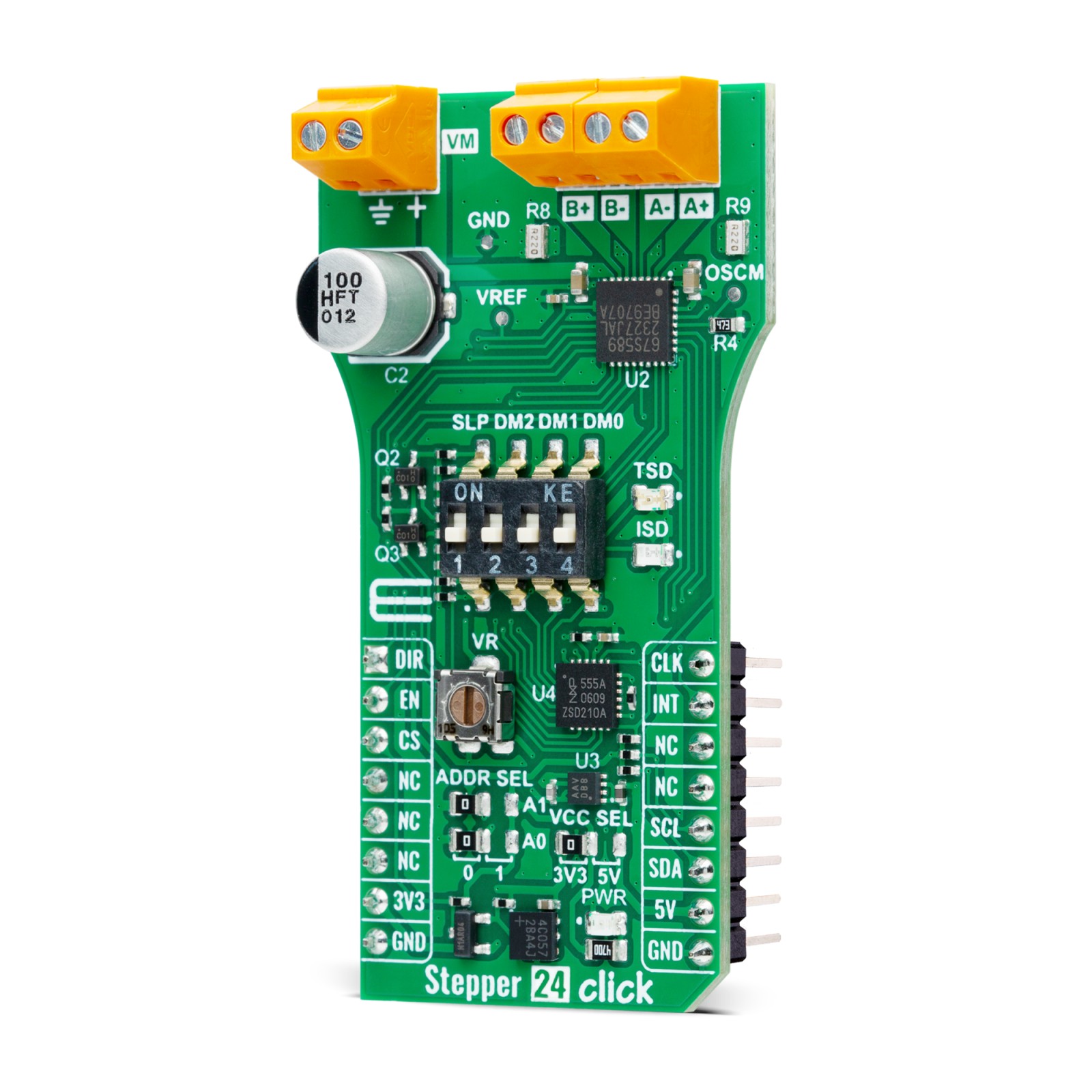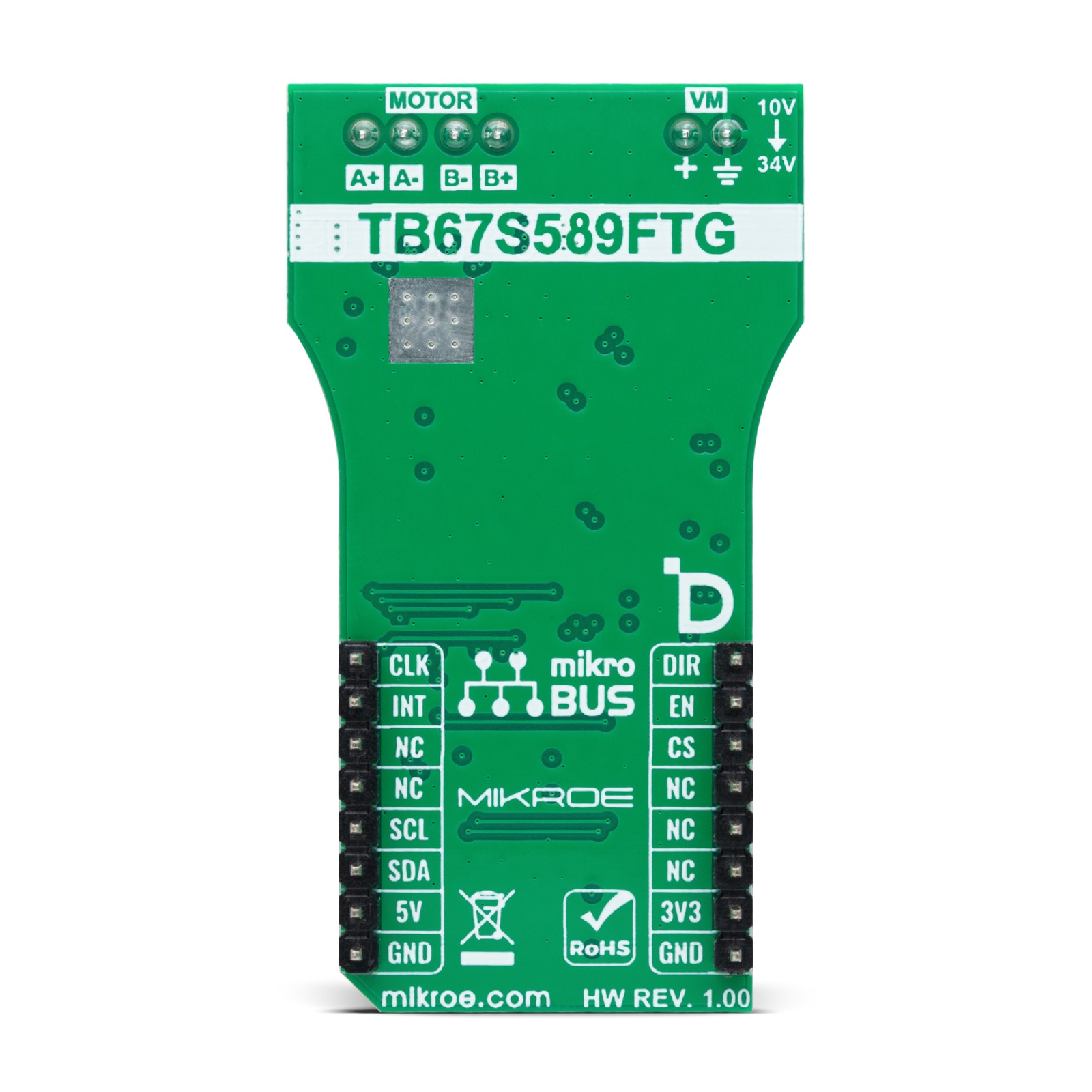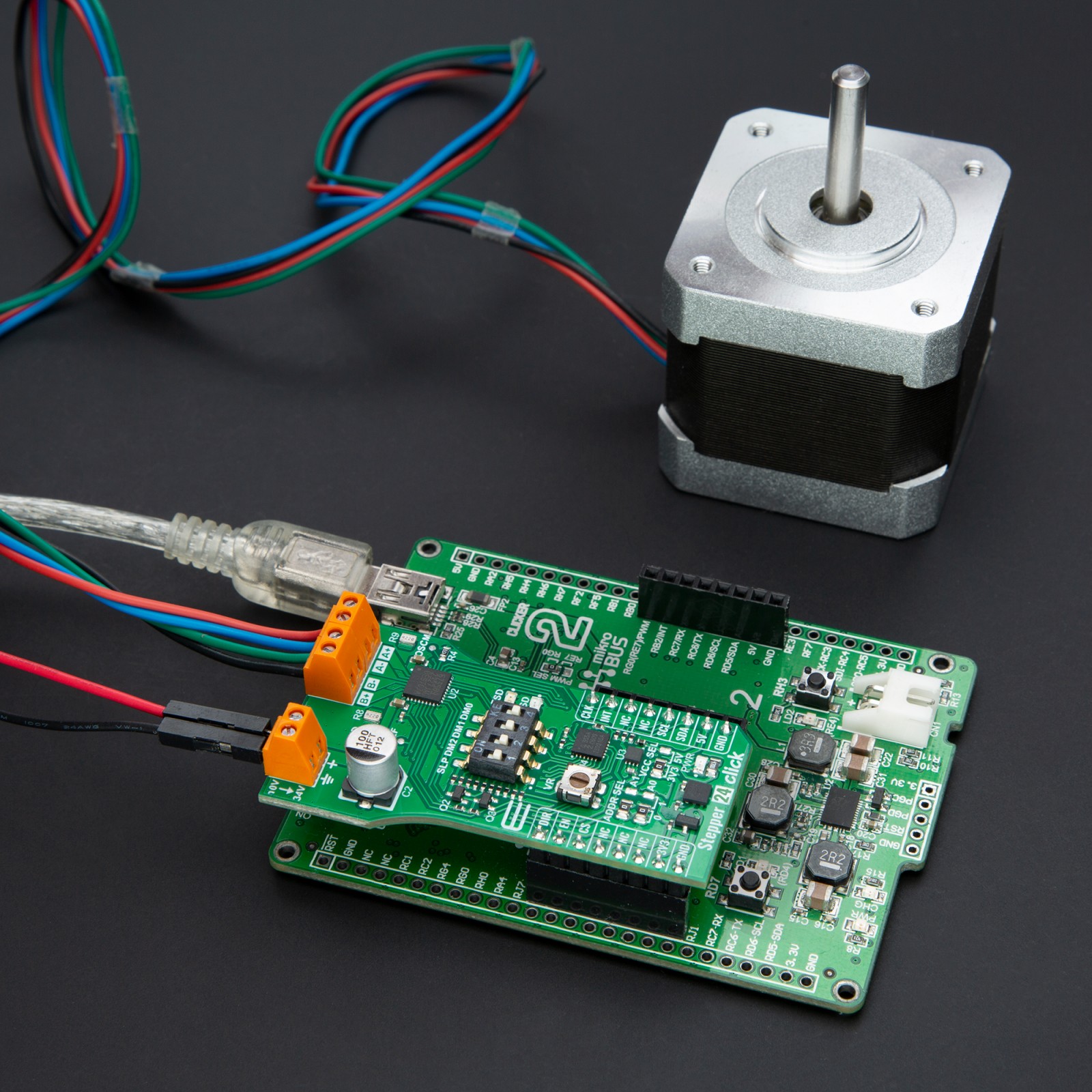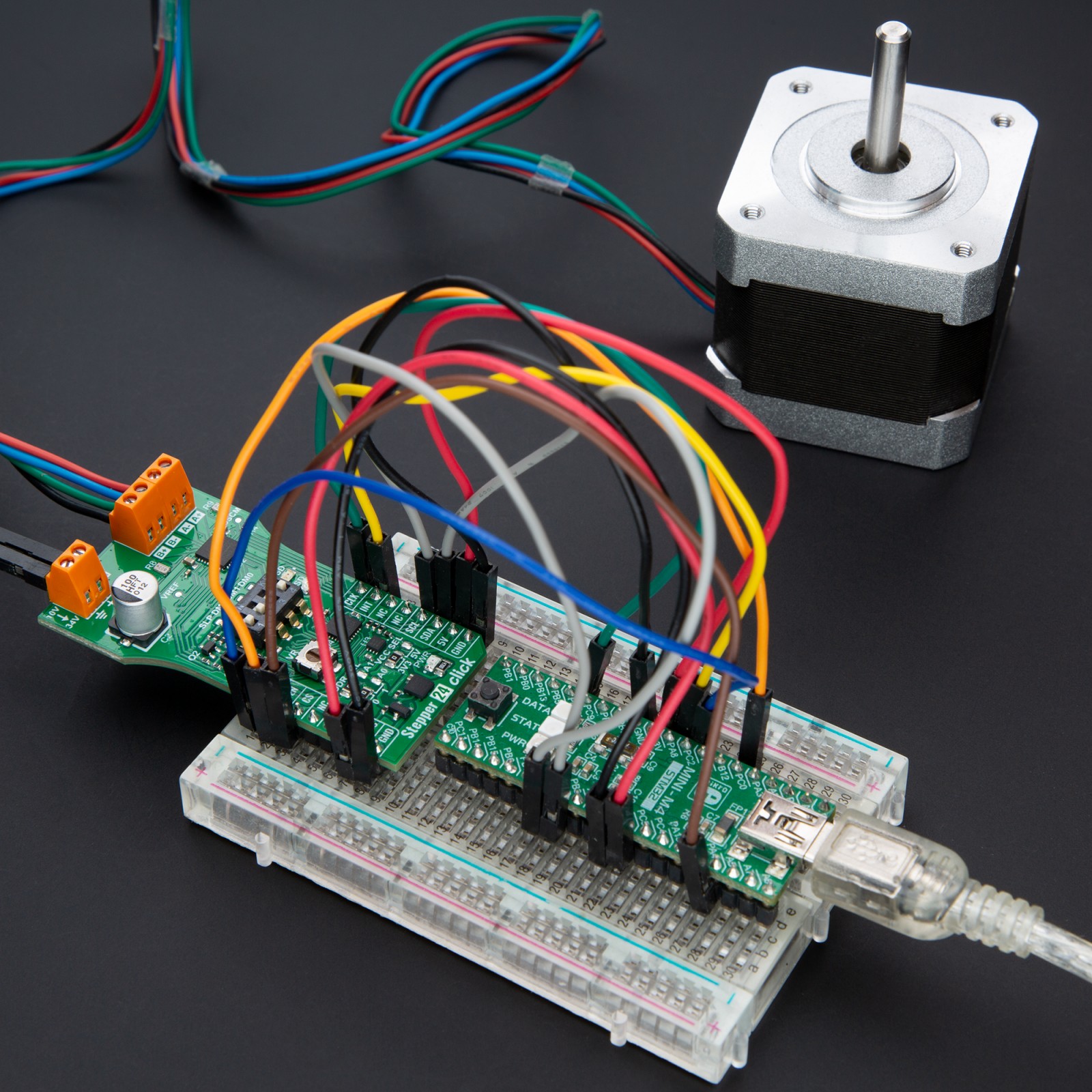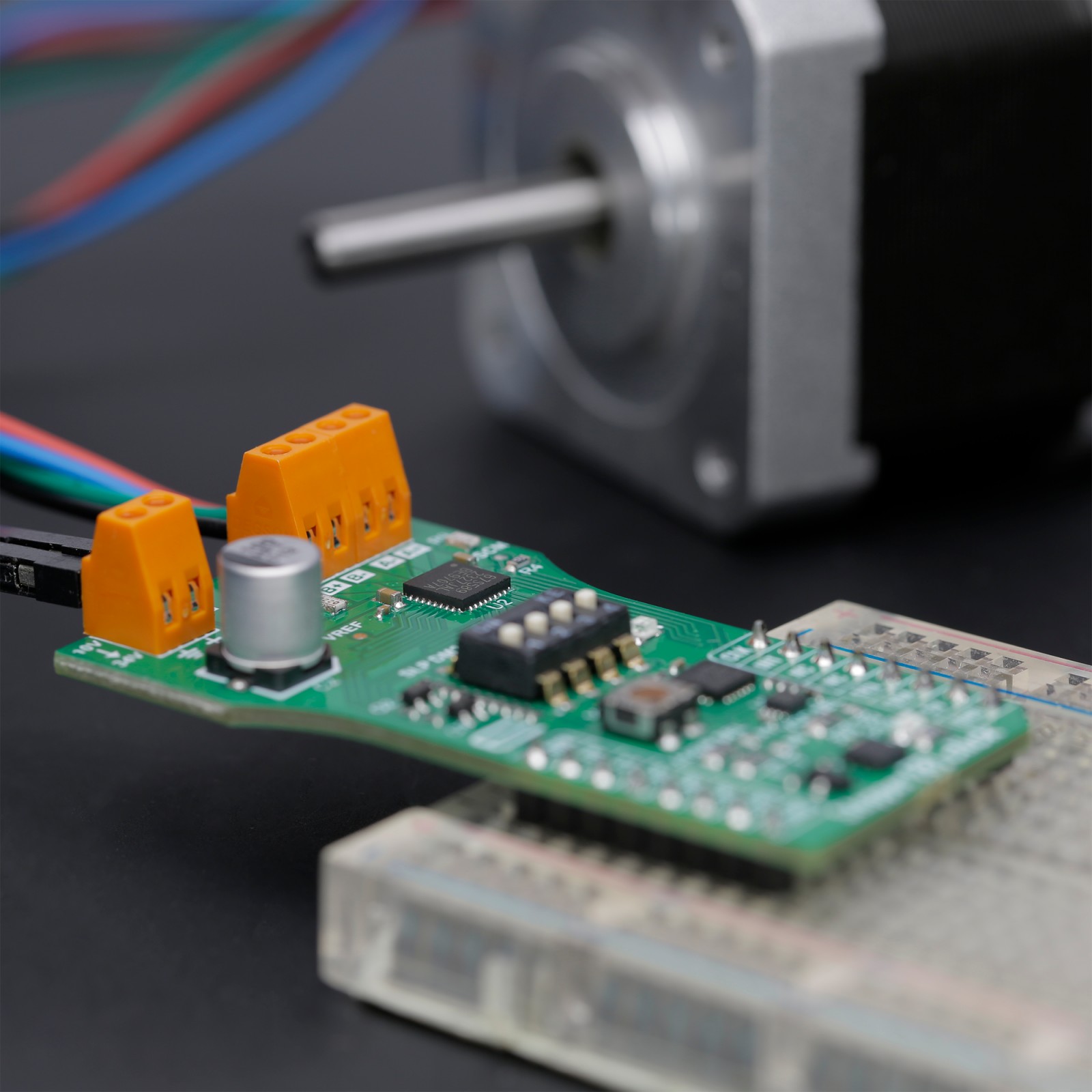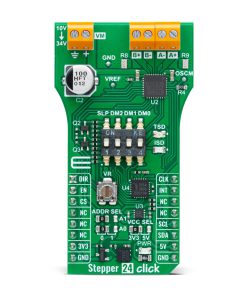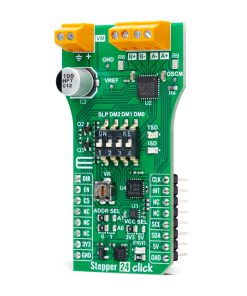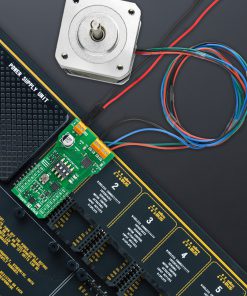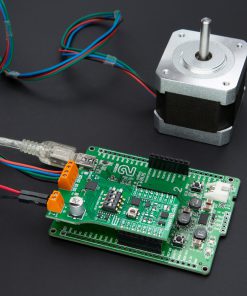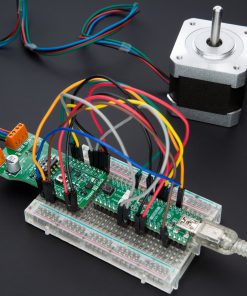Subtotal: R1,030.00
Stepper 24 Click
R840.00 ex. VAT
Stepper 24 Click is a compact add-on board designed to drive small stepping motors in consumer electronics and industrial equipment applications. This board features the TB67S589FTG, a BiCD constant-current 2-phase bipolar stepping motor driver IC from Toshiba Semiconductor. Key features include a PWM chopper-type 2-phase bipolar drive system, high withstand voltage of up to 34V operating, and a maximum operating current of 2.7A per phase. The board also integrates safety mechanisms such as over-temperature, over-current, and low-supply voltage detection. Additional control is provided by the PCA9555A port expander via I2C, enabling functions like decay and torque modes, step resolution settings, and many more. This Click board™ offers efficient and precise control of stepping motors for enhanced performance and reliability in various applications.
Stepper 24 Click is fully compatible with the mikroBUS™ socket and can be used on any host system supporting the mikroBUS™ standard. It comes with the mikroSDK open-source libraries, offering unparalleled flexibility for evaluation and customization. What sets this Click board™ apart is the groundbreaking ClickID feature, enabling your host system to seamlessly and automatically detect and identify this add-on board.
NOTE: For optimal thermal performance, MIKROE provides high-quality aluminum and copper heatsinks with adhesive tapes that are available for purchase in its shop. These heatsinks offer the flexibility to enhance the cooling of various components (in this case, the main motor driver), ensuring your system runs efficiently and reliably.
Stock: Lead-time applicable.
| 5+ | R798.00 |
| 10+ | R756.00 |
| 15+ | R714.00 |
| 20+ | R687.12 |

 MPU 9DOF Click
MPU 9DOF Click  4-20mA R Click
4-20mA R Click 
